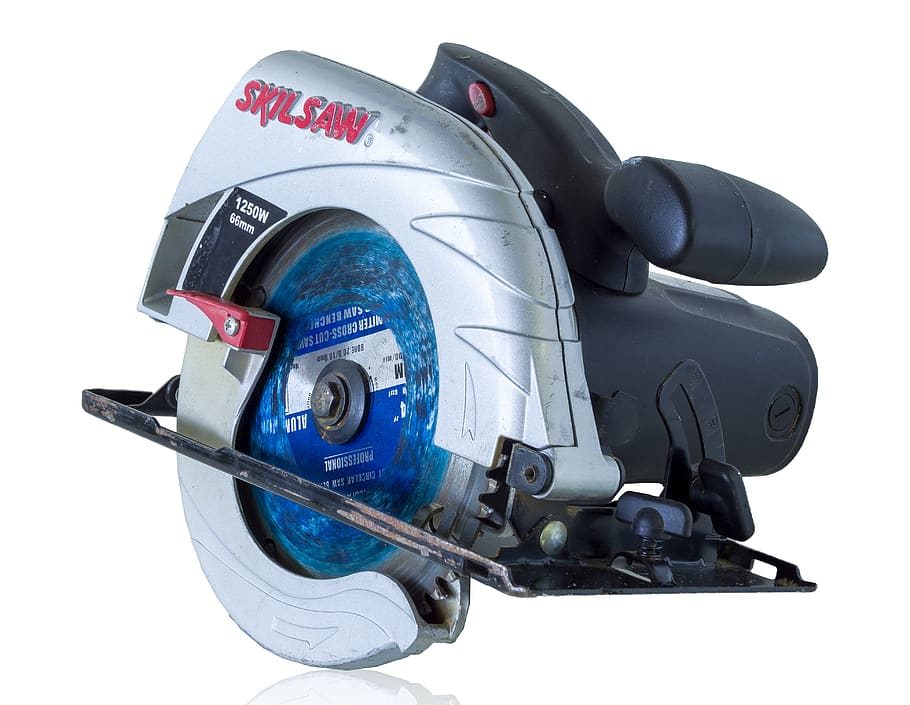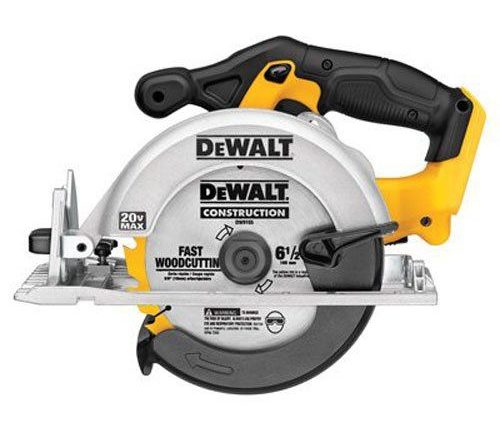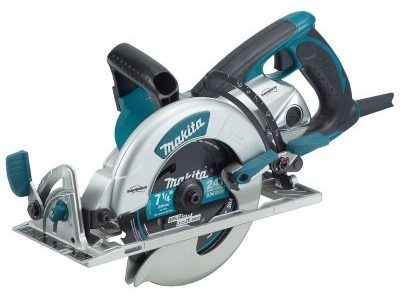Skill Saw vs Circular Saw: What’s the Difference?
-
Pete Ortiz
- Last updated:

Since we know a little about saws, we often field questions from people who are just getting into DIY. One of the most common is, “What’s the difference between a skill saw and a circular saw?”
It’s a fair question. They look exactly the same. But since Google offers conflicting and vague information on this subject, we thought we’d settle the matter once and for all.
Circular Saws Come First
There are several competing origin stories for the circular saw. The earliest credits its invention to an Englishman named Samuel Miller, who was awarded a patent in 1777. Interestingly, the patent only credits Miller with inventing a machine in which to mount the circular saw, hinting that circular blades were already being used.
A more colorful story suggests that the saw was invented by an American Shaker named Tabitha Babbitt, who attached a circular blade to her spinning wheel after noticing villagers struggling with a heavy two-man saw.
Like all the best tools, the origins of the circular saw are shrouded in myth. What we can say for sure, though, is that powered circular saws were in wide use by the early 20th century, when the skill saw was invented.
Birth of the Skill Saw
In 1923, Edmond Michel invented the first electric saw that could be carried in the user’s hands. He teamed up with a farmer named Joseph Sullivan, and founded a company called Skilsaw to produce and sell his invention.
Michel’s invention was what we’d call a worm drive circular saw today. In a worm drive saw, the motor sits behind the blade, making the saw heavier, more powerful, and more compact. It’s the opposite of a sidewinder saw, which we’ll get into in a moment.
There were other circular saws on the market, but Skilsaw’s flagship product was a huge hit, thanks to its ability to fit into tight spaces and work without gas. It sold so well that the design became synonymous with the product. Copycats inevitably emerged, but since Michel’s design was so well-known, people called them “skilsaws” even though they weren’t made by Skilsaw.
Eventually, that name turned into the modern term “skill saw.”
Circular Saws vs. Skill Saws
Today, when people talk about a skill saw, they mean something similar to what Edmond Michel patented in 1923: a handheld circular saw, powered by electricity, with the motor mounted in a housing behind the blade.
All skill saws are circular saws. They all have circular blades that spin rapidly to bite through wood. However, not all skill saws are circular saws. Circular saws can be gas-powered, have sidewinder or hypoid designs, or even be fixed to radial arms, which skill saws commonly aren’t.
Just to make it even more confusing: not everybody uses those definitions. Some old-timers insist on referring to any and every powered circular saw as a skill saw, treating the two terms as synonyms.
The Three Types of Circular Saws
Now that we’ve sorted out the circular vs. skill debate as best we can, let’s talk about some of the better-defined subgroups of circular saws. There are three basic ways to build a handheld circular saw:
Worm Drive
The one we’ve already talked about. In a worm drive saw, the motor is mounted behind the blade. Worm drive saws have a narrower profile that’s easier to use in confined spaces.-
- The drivetrain, which consists of a worm gear connected to the saw’s axle, delivers more power than the simpler sidewinder, leading to faster cuts and the ability to work with more solid woods.
- Worm drive saws also have the deepest cutting capacity.
Sidewinder/Direct Drive
In a direct drive or sidewinder circular saw, the motor is connected to an axle that turns the blade. It’s a simpler design that confers less mechanical advantage, which means less torque for the blade.-
- Despite not being as powerful as a worm drive, sidewinder saws are lighter and more comfortable to use over the course of a day.
- Direct-drive saws have the shallowest cutting capacities on average.
Hypoid
A hypoid circular saw’s motor is placed behind the blade, just like in a worm drive saw. However, hypoids use conical gears instead of worm gears to deliver power to the blade. This allows them to be a little bit less heavy than other worm drives, though not as light as a sidewinder/direct drive.-
- Hypoid saws are most closely associated with the Makita company.
- They usually have a cutting capacity between that of the other two saws.
Conclusion
At the end of the day, you don’t need to know who invented what saw to pick the one that’s best for your needs. Just use this handy guide to help you distinguish which is best for your project:
If you’re getting your first circular saw, choose a sidewinder/direct-drive saw. These are light and turn with less power, which lets you get used to the feeling of cutting with a circular saw.
If you’re working in tight spaces, need a deep cutting capacity, or want more power, go with a worm drive saw/skill saw.
If you like worm drive saws, but your arms get tired after holding them all day, try a hypoid saw instead.
Related Reads:
- Chop Saw vs Miter Saw: Which One To Choose?
- Scroll Saw vs Jigsaw: Which Is The Best For Your Needs?
- Miter Saw vs Circular Saw: Which Is The Best For Your Needs?
Contents







